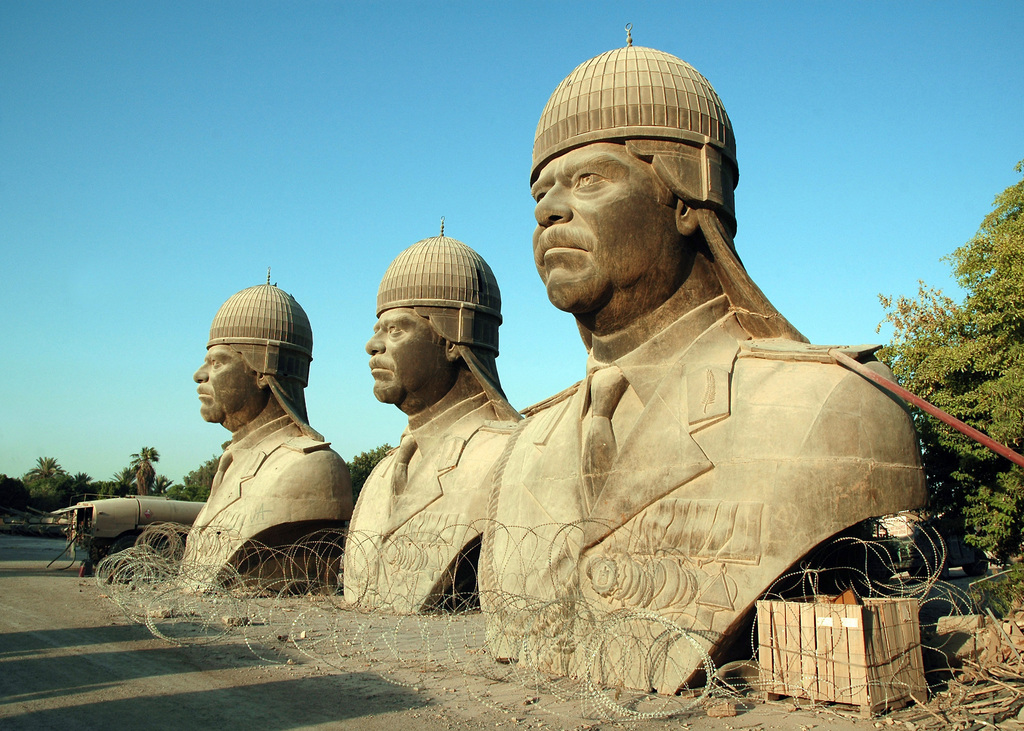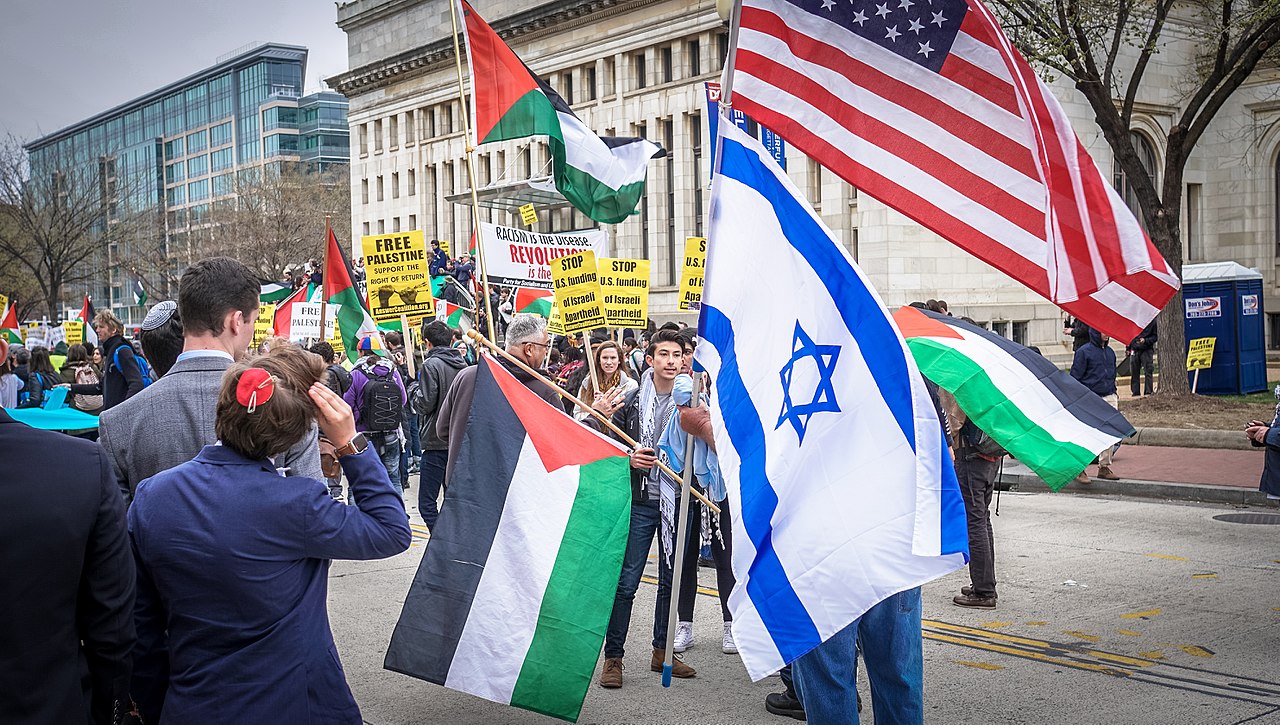Gregory Johnsen on Yemen and AQAP
The other day, my Brookings colleague Daniel Byman held an event entitled "Yemen and the Future of a Resurgent Al Qaeda." One of the two panelists was Gregory Johnsen, the author of the recently-released book, The Last Refuge: Yemen, al-Qaeda, and America's War in Arabia.
Published by The Lawfare Institute
in Cooperation With

The other day, my Brookings colleague Daniel Byman held an event entitled "Yemen and the Future of a Resurgent Al Qaeda." One of the two panelists was Gregory Johnsen, the author of the recently-released book, The Last Refuge: Yemen, al-Qaeda, and America's War in Arabia. I have been impressed by Johnsen's work for some time; he knows a lot about Yemen, about which he blogs and tweets. So I asked him to put together an excerpt of his new book for Lawfare. While he was here at Brookings, Ritika also shot this video of his initial presentation:
For those interested in listening to the full event---which also includes a presentation by Ibrahim Sharqieh, deputy director of the Brookings Doha Center---the audio is available on the Brookings event page.
Johnsen writes:
Nearly four years ago, as Barack Obama was preparing to be inaugurated as the 44th President of the United States, a small group of Yemenis and Saudis staged their own coming out party in the rugged highlands of north Yemen. For such young men, they had surprisingly long histories. Nearly all of them had fought and failed elsewhere. Some had been imprisoned, locked away in some of the world’s darkest corners. In Iran and Saudi Arabia, Guantánamo Bay and Yemen, they had paid for their failures. In dank prison cells, the men had been tortured and interrogated, deprived of sleep and burned. But they had survived, and within months they would put a would-be suicide bomber on a plane bound for the US and help initiate years of war. Since December 2009, the US has been carrying out attacks against suspected al-Qaeda targets in Yemen as part of the Obama administration’s attempt to disrupt, dismantle and defeat the terrorist organization. During that same time period al-Qaeda in the Arabian Peninsula (AQAP), the branch based in Yemen, has grown from an estimated 200 – 300 members to more than 1,000. What follows below is a short excerpt from The Last Refuge: Yemen, al-Qaeda and America’s War in Arabia. This is how it all began in Yemen.****
In early January 2009, Nasir al-Wihayshi asked several operatives to arrange an interview for him with a local journalist. Weeks earlier, Said al-Shihri, the former Guantánamo Bay detainee, had crossed the border into Yemen with the Saudis he had recruited at the banquet in Taif. The influx of men presented Wihayshi with the opportunity he had been looking for. There had always been plenty of Saudis within al-Qaeda in Yemen—men like Ibrahim and Abdullah Asiri—but none of them had Shihri’s presence or experience. The former Guantánamo Bay detainee quickly came to an agreement with Wihayshi. In much the same way as Osama bin Laden and Ayman al-Zawahiri had united their own organizations years earlier in Afghanistan, Wihayshi and Shihri would announce a merger between the Yemeni and Saudi branches of al-Qaeda. The new group would be called al-Qaeda in the Arabian Peninsula, or AQAP as intelligence agencies came to know it. Al-Qaeda agents in Sanaa approached several local journalists, dangling the possibility of an exclusive interview, before settling on Abdalilah Shaya, an urbane young Yemeni who favored designer glasses and a slicked-back hairstyle. Qasim al-Raymi, who had been named a military commander in the new organization, vetted the agents’ choice in a Sanaa safe house. As Raymi finished his background check, he informed Shaya that al-Qaeda would need a list of his questions in advance. Soon after Shaya submitted his questions, word came back that al-Qaeda was ready. The journalist was not allowed to bring his laptop, cell phone, or anything electronic that intelligence agencies could use to pinpoint their location. Al-Qaeda would take care of everything. Armed guards patted Shaya down and blindfolded him before putting him in the car al-Qaeda had sent. When the men removed the blindfold, Shaya was standing in the middle of a bare room surrounded by several young men. In front of him, sitting on a small table, was an open laptop al-Qaeda had arranged for his use. A slim man in a black-checked headdress with a gray-flecked beard motioned for Shaya to sit next to him. Greeting him in a Saudi accent, the man showed Shaya the green vest he was wearing. “Do you know what this is?” he asked. Looking into the stranger’s face, Shaya sensed he was being teased. “I don’t know,” he stuttered. “Some sort of a pack.” “It’s a suicide vest,” the man said, taking the straps off his shoulders and draping them over Shaya. “Don’t be scared,” he whispered. Shaya had never seen a suicide vest in person, and he froze as the Saudi eased the heavy pack down onto his chest. “There are enough explosives in here to take out two floors,” the man bragged. Slowly, as Shaya struggled to control his breathing, the Saudi demonstrated how the bomb worked, showing him the deep pockets for explosives and the small detonator switch that triggered everything. “I’m never apart from this,” the man breathed, gently running his hand over the rough green fabric. Seeing the discomfort on Shaya’s face, the Saudi prodded him. “Go ahead, feel it for yourself,” he instructed. “Run your hand over the top.” Shaya blanched and tried to move, but his hand wouldn’t respond. “Stop,” the man barked. “Don’t touch that. You’ll set the bomb off.” No one in the room moved. Slowly, the man’s face crinkled into a smile. It was a joke. Chuckling softly, the Saudi lifted the vest off Shaya’s chest and introduced himself as Said al-Shihri, a former detainee at Guantánamo Bay. Shaya tried to calm himself and remember his questions during the round of introductions that followed. Minutes later, a throng of masked gunmen slipped into the room, signaling Wihayshi’s arrival. Stealing yet another page from bin Laden’s playbook, the young al-Qaeda commander wanted to make the sort of dramatic appearance his hero had perfected in Afghanistan. Shaya watched as the others greeted the little man in the light blue robe and white turban. He had seen Wihayshi’s mug shot, but in person the al-Qaeda commander seemed even smaller, his sharp nose and sunken cheeks masked by the tufts of facial hair that jutted out from his face. Soon it was Shaya’s turn. The shaykh was standing right in front of him. Wihayshi shook the journalist’s hand and embraced him with a gentle smile. “Welcome,” he said. “Sit here beside me.” Shaya wanted to start the interview, but Wihayshi shook his head. “We have certain obligations,” he said as aides brought out tea and cold drinks. A few minutes later, several plates of food appeared. Shaya’s face registered surprise. He hadn’t expected hospitality from terrorists. Wihayshi noted his reaction, but instead of commenting the al-Qaeda leader merely raised his eyebrows politely. As he finished the food hospitality dictated he consume, Shaya realized he had no idea who these men were. This wasn’t the al-Qaeda he had read about. For the next ninety minutes, Wihayshi tried to educate him, walking the young journalist through the religious justification for al-Qaeda’s past actions and laying out their plan to “cleanse the Arabian peninsula.” The soft-spoken al-Qaeda commander politely evaded questions about the death of innocent Muslims like Susan al-Banna, who had been killed in the attack on the US embassy months earlier, and laughed off Shaya’s attempts to portray Ali Abdullah Salih as a legitimate ruler. “What elections?” Wihayshi protested. At the end of the interview, Wihayshi stood up to escort Shaya to the door. Remember, he cautioned, the interview is embargoed until we let you know. The al-Qaeda leader had one more surprise. More than 6,000 miles away, Barack Obama was coming to his own decision. On January 22, 2009, his second full day in office, the newly elected president signed the executive order that he had promised during his campaign. Seated at a table in the West Wing in front of a phalanx of retired military officers, Obama promised to close Guantánamo Bay and “restore the standards of due process and the core constitutional values that made this country great even in the midst of war.” The next day Wihayshi released his surprise. Along with the Shaya interview, the al-Qaeda commander had put together a short video featuring himself, Shihri, Raymi, and Muhammad al-Awfi, another former Guantánamo Bay detainee. The four represented AQAP’s new leadership: two Yemenis and two Saudis. Wihayshi’s nineteen-minute video put a face on the worst fears of some in the US government: men the US once had in custody were free and threatening to kill Americans. “By God, we are coming,” AQAP’s new leaders swore into the camera. “We will bring delight to the eyes of our mothers in Palestine and Gaza,” they promised. “Either we will come to them with the flags of Jihad waving above steeds of war with the determination of our forefathers, or we will die in this cause.” As bin Laden had years earlier, AQAP left no doubt. It was targeting the US. Reprinted from The Last Refuge: Yemen, al-Qaeda, and America's War in Arabia by Gregory D. Johnsen. Copyright © 2013 by Gregory D. Johnsen. With the permission of the publisher, W.W. Norton & Company, Inc. All rights reserved.
Benjamin Wittes is editor in chief of Lawfare and a Senior Fellow in Governance Studies at the Brookings Institution. He is the author of several books.




